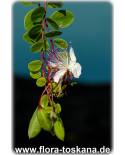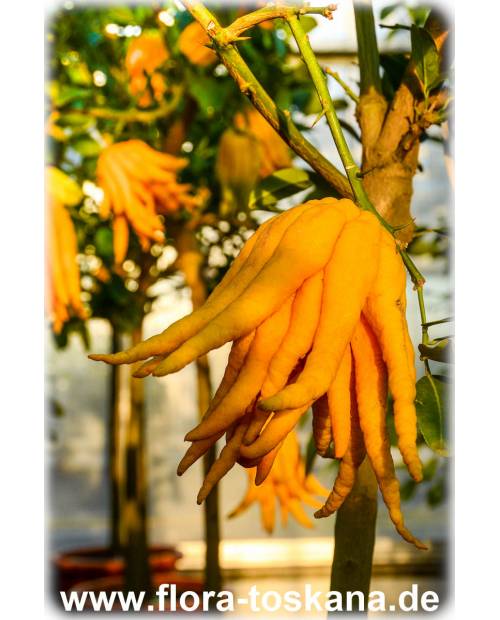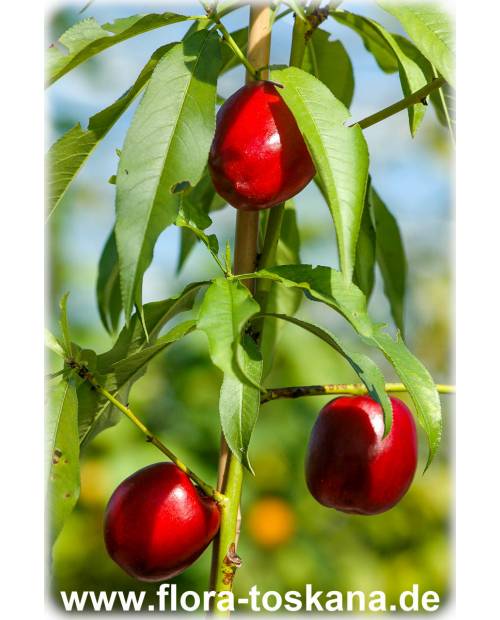Capparis spinosa 'Inermis' - Caper
You alone must make the decision whether you prefer to pickle the flower buds of the caper shrub (Capparis spinosa) as a seasoning (capers) or admire their unfolding into magnificent pinkish-white flowers with long violet-colored stamens.
The Caper shrub (Capparis spinosa) produces the well-known capers. However, capers are not the fruits, but the approximately pea-sized, unopened flower buds. They are pickled in vinegar to develop their typical taste. If the buds are not picked, they unfold to slight pink, beautiful flowers of 4 to 5 cm in diameter with a cluster of purple stamens in the center. When caring for caper shrubs, less is more. These undemanding shrubs even grow out of wall cracks in the Mediterranean region. Accordingly, as pot plants they need poor, stony-sandy and well draining substrate. The sun- and heat-loving branches are very flexible. Once they are 20 cm long, the branches bend to the ground again, thus making the Caper shrubs good ground cover or cascading plants. In one of today's growing areas on the Aeolian Islands, offshore from Sicily, Caper shrubs grow shrubby through ongoing pruning and tying up. Dying back in winter the branches will sprout again in spring. Our variety ‘Inermis’ has no thorns. Please note: When delivered in spring, Caper shrubs still have very short shoots.
![]() Quality: well-known spice plants; exotic & large flowers; small-growing; easy to care for & heat tolerant
Quality: well-known spice plants; exotic & large flowers; small-growing; easy to care for & heat tolerant![]() Use: in pots from April/May to September/October outside on balcony, terrace or in the garden - during winter in an unheated winter quarter; all year round in an unheated or sporadically heated winter garden
Use: in pots from April/May to September/October outside on balcony, terrace or in the garden - during winter in an unheated winter quarter; all year round in an unheated or sporadically heated winter garden
Data sheet
- Family
- Capparaceae
- Origin
- Mediterranean
- Flowering period
- Summer
- Color of flowers
- White
- Fruits
- Spice plant
- Growth
- Small shrub
- Location
- Full sun
- winter temperature
- 8 (±5)°C
- Minimum temperature
- -5 °C
- Hardiness Zones
- 8
- Height
- 0,2 - 0,5 m
You might also like
Customers who bought this product also bought:
















































